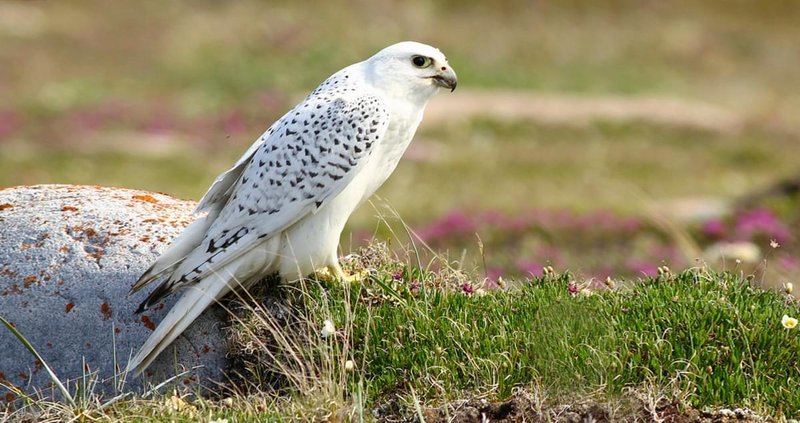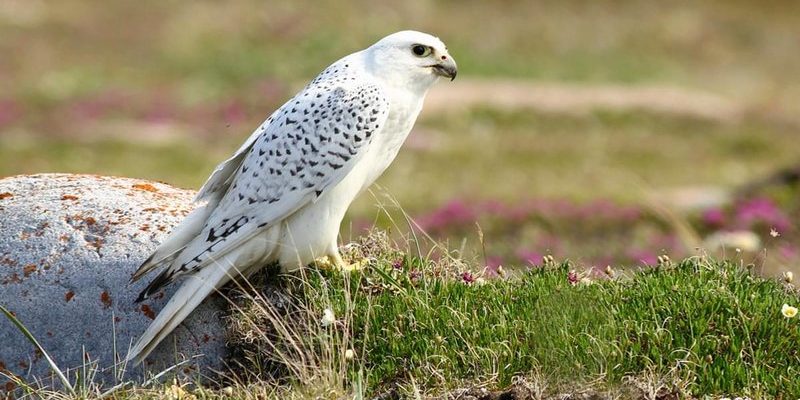
In this article, we’ll dive deep into the history and evolution of the gyrfalcon. Think of it as a journey through time, exploring how this incredible bird developed its unique traits and behaviors throughout the ages. We’ll look at its adaptation to different environments, its significance in various cultures, and even its role in falconry. So grab a cup of coffee, and let’s explore the world of the gyrfalcon together.
What is a Gyrfalcon?
The gyrfalcon is the largest member of the falcon family, and it stands out for its impressive size and striking appearance. Typically, these birds measure about 18 to 24 inches long, with a wingspan that can reach up to 4 feet. They come in various color morphs, from white to dark gray, each as stunning as the next. You might be wondering, what makes them so special?
These birds are designed for speed and agility. Their long wings allow them to soar gracefully, while their sharp beaks and talons are perfect for catching prey. Predominantly found in the Arctic regions, gyrfalcons have adapted to cold environments, relying on their impressive hunting skills to survive in such challenging conditions. So, whenever you picture a sharply focused bird against an icy landscape, that’s likely a gyrfalcon.
The Early History of Gyrfalcons
The history of gyrfalcons is as fascinating as the bird itself. Their lineage traces back millions of years, with ancestors adapting to various climates and surroundings. You might think of them as the OGs of the falcon world. Early records suggest that these birds were revered by different cultures across history, from the Vikings to the Native Americans.
In ancient times, gyrfalcons were associated with nobility and power. They became symbols of status, often given as lavish gifts between royals. Think about it: how many birds do you know that could command such respect? This connection to human history shows how deeply intertwined the gyrfalcon has been with our own societal evolution.
Gyrfalcon Adaptations Through Time
The ability of the gyrfalcon to adapt to its harsh environment is one of its most remarkable traits. Over centuries, these birds have developed thicker plumage and a more robust body to withstand freezing temperatures. Imagine wearing a warm coat that not only looks good but also protects you from the biting cold—that’s what the gyrfalcon’s feathers do for it!
They’re also skilled hunters, able to dive at speeds of over 100 miles per hour to catch their prey, which mainly consists of birds and small mammals. This speed isn’t just for show; it’s a crucial adaptation that helps them thrive. You might say they are nature’s high-speed hunters, finely tuned to their icy habitats.
Cultural Significance of the Gyrfalcon
Throughout history, many cultures have held gyrfalcons in high regard. For instance, in medieval Europe, these birds were often kept by the nobility for hunting during the sport of falconry. The art of hunting with trained birds of prey became a symbol of prestige. Imagine a knight showing off his prized gyrfalcon, poised and ready to hunt—talk about a showstopper!
In addition to its role in falconry, the gyrfalcon also appears in various mythologies. In indigenous Alaskan cultures, they are seen as powerful spirits, representing strength and endurance. This cultural significance illustrates how deeply these creatures resonate within human history.
The Role of Gyrfalcons in Conservation
As fascinating as gyrfalcons are, they face challenges due to habitat loss and climate change. Conservation efforts are crucial for ensuring these birds continue to thrive. Organizations around the world work to monitor gyrfalcon populations and protect their habitats. Here’s the thing: if we don’t act now, we might lose these magnificent birds forever.
You might wonder how you can help. Supporting conservation initiatives, whether through donations or education, can make a difference. Every small action contributes to the greater good of preserving these incredible animals and their natural environments for future generations.
Comparing Gyrfalcons to Other Birds of Prey
When thinking about birds of prey, it’s hard not to compare them to other majestic raptors like eagles and hawks. Gyrfalcons differ significantly in size, hunting styles, and habitats. For example, while eagles often hunt in open areas, gyrfalcons excel in more varied terrains, including rugged Arctic landscapes.
Let’s take a closer look:
| Bird Type | Size | Hunting Style | Habitat |
| Gyrfalcon | 18-24 inches | High-speed dives | Arctic regions |
| Golden Eagle | 26-40 inches | Gliding and soaring | Mountains and cliffs |
| Red-tailed Hawk | 18-26 inches | Perch and dive | Forests and open fields |
This comparison highlights not just the uniqueness of the gyrfalcon but also the fascinating roles that different raptors play in their ecosystems.
The gyrfalcon has a rich history filled with remarkable adaptations and cultural significance. As we’ve seen, these extraordinary birds are not just beautiful; they also play essential roles in their ecosystems and human culture. Their evolution over time illustrates the importance of adaptability and resilience in nature.
You might feel inspired to learn more about these creatures or even get involved in conservation efforts yourself! By understanding the history and challenges these birds face, we can appreciate their beauty even more. So next time you look up at the sky, remember the gyrfalcon and the incredible journey it has taken to thrive in a changing world.

